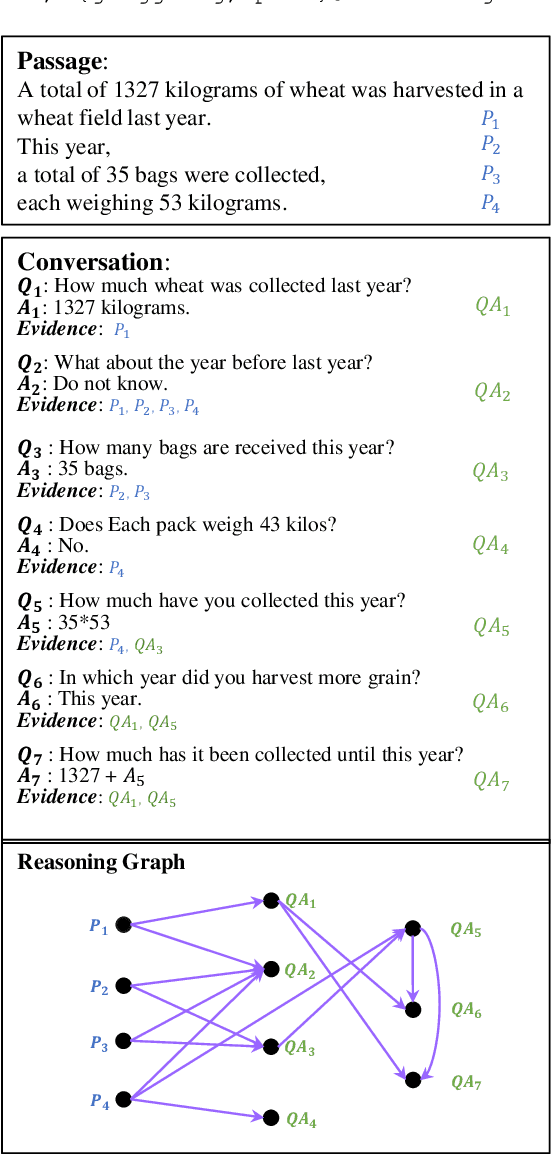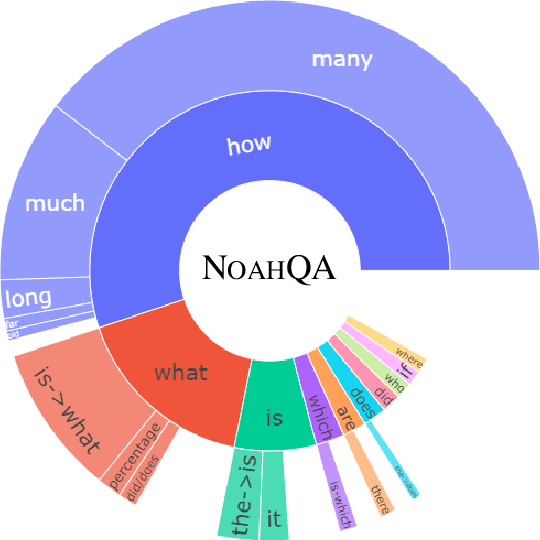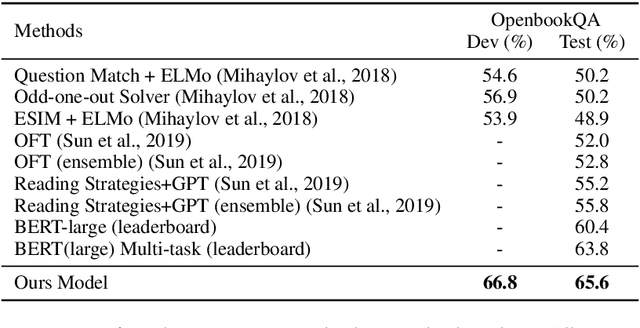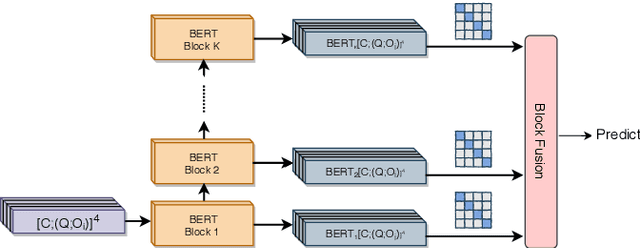Sicheng Yu
3D Question Answering via only 2D Vision-Language Models
May 28, 2025Abstract:Large vision-language models (LVLMs) have significantly advanced numerous fields. In this work, we explore how to harness their potential to address 3D scene understanding tasks, using 3D question answering (3D-QA) as a representative example. Due to the limited training data in 3D, we do not train LVLMs but infer in a zero-shot manner. Specifically, we sample 2D views from a 3D point cloud and feed them into 2D models to answer a given question. When the 2D model is chosen, e.g., LLAVA-OV, the quality of sampled views matters the most. We propose cdViews, a novel approach to automatically selecting critical and diverse Views for 3D-QA. cdViews consists of two key components: viewSelector prioritizing critical views based on their potential to provide answer-specific information, and viewNMS enhancing diversity by removing redundant views based on spatial overlap. We evaluate cdViews on the widely-used ScanQA and SQA benchmarks, demonstrating that it achieves state-of-the-art performance in 3D-QA while relying solely on 2D models without fine-tuning. These findings support our belief that 2D LVLMs are currently the most effective alternative (of the resource-intensive 3D LVLMs) for addressing 3D tasks.
Sparse-to-Dense: A Free Lunch for Lossless Acceleration of Video Understanding in LLMs
May 25, 2025Abstract:Due to the auto-regressive nature of current video large language models (Video-LLMs), the inference latency increases as the input sequence length grows, posing challenges for the efficient processing of video sequences that are usually very long. We observe that during decoding, the attention scores of most tokens in Video-LLMs tend to be sparse and concentrated, with only certain tokens requiring comprehensive full attention. Based on this insight, we introduce Sparse-to-Dense (StD), a novel decoding strategy that integrates two distinct modules: one leveraging sparse top-K attention and the other employing dense full attention. These modules collaborate to accelerate Video-LLMs without loss. The fast (sparse) model speculatively decodes multiple tokens, while the slow (dense) model verifies them in parallel. StD is a tuning-free, plug-and-play solution that achieves up to a 1.94$\times$ walltime speedup in video processing. It maintains model performance while enabling a seamless transition from a standard Video-LLM to a sparse Video-LLM with minimal code modifications.
RGB-Only Gaussian Splatting SLAM for Unbounded Outdoor Scenes
Feb 21, 2025



Abstract:3D Gaussian Splatting (3DGS) has become a popular solution in SLAM, as it can produce high-fidelity novel views. However, previous GS-based methods primarily target indoor scenes and rely on RGB-D sensors or pre-trained depth estimation models, hence underperforming in outdoor scenarios. To address this issue, we propose a RGB-only gaussian splatting SLAM method for unbounded outdoor scenes--OpenGS-SLAM. Technically, we first employ a pointmap regression network to generate consistent pointmaps between frames for pose estimation. Compared to commonly used depth maps, pointmaps include spatial relationships and scene geometry across multiple views, enabling robust camera pose estimation. Then, we propose integrating the estimated camera poses with 3DGS rendering as an end-to-end differentiable pipeline. Our method achieves simultaneous optimization of camera poses and 3DGS scene parameters, significantly enhancing system tracking accuracy. Specifically, we also design an adaptive scale mapper for the pointmap regression network, which provides more accurate pointmap mapping to the 3DGS map representation. Our experiments on the Waymo dataset demonstrate that OpenGS-SLAM reduces tracking error to 9.8\% of previous 3DGS methods, and achieves state-of-the-art results in novel view synthesis. Project Page: https://3dagentworld.github.io/opengs-slam/
Reverse Modeling in Large Language Models
Oct 13, 2024



Abstract:Humans are accustomed to reading and writing in a forward manner, and this natural bias extends to text understanding in auto-regressive large language models (LLMs). This paper investigates whether LLMs, like humans, struggle with reverse modeling, specifically with reversed text inputs. We found that publicly available pre-trained LLMs cannot understand such inputs. However, LLMs trained from scratch with both forward and reverse texts can understand them equally well during inference. Our case study shows that different-content texts result in different losses if input (to LLMs) in different directions -- some get lower losses for forward while some for reverse. This leads us to a simple and nice solution for data selection based on the loss differences between forward and reverse directions. Using our selected data in continued pretraining can boost LLMs' performance by a large margin across different language understanding benchmarks.
Frame-Voyager: Learning to Query Frames for Video Large Language Models
Oct 07, 2024Abstract:Video Large Language Models (Video-LLMs) have made remarkable progress in video understanding tasks. However, they are constrained by the maximum length of input tokens, making it impractical to input entire videos. Existing frame selection approaches, such as uniform frame sampling and text-frame retrieval, fail to account for the information density variations in the videos or the complex instructions in the tasks, leading to sub-optimal performance. In this paper, we propose Frame-Voyager that learns to query informative frame combinations, based on the given textual queries in the task. To train Frame-Voyager, we introduce a new data collection and labeling pipeline, by ranking frame combinations using a pre-trained Video-LLM. Given a video of M frames, we traverse its T-frame combinations, feed them into a Video-LLM, and rank them based on Video-LLM's prediction losses. Using this ranking as supervision, we train Frame-Voyager to query the frame combinations with lower losses. In experiments, we evaluate Frame-Voyager on four Video Question Answering benchmarks by plugging it into two different Video-LLMs. The experimental results demonstrate that Frame-Voyager achieves impressive results in all settings, highlighting its potential as a plug-and-play solution for Video-LLMs.
OVFoodSeg: Elevating Open-Vocabulary Food Image Segmentation via Image-Informed Textual Representation
Apr 01, 2024Abstract:In the realm of food computing, segmenting ingredients from images poses substantial challenges due to the large intra-class variance among the same ingredients, the emergence of new ingredients, and the high annotation costs associated with large food segmentation datasets. Existing approaches primarily utilize a closed-vocabulary and static text embeddings setting. These methods often fall short in effectively handling the ingredients, particularly new and diverse ones. In response to these limitations, we introduce OVFoodSeg, a framework that adopts an open-vocabulary setting and enhances text embeddings with visual context. By integrating vision-language models (VLMs), our approach enriches text embedding with image-specific information through two innovative modules, eg, an image-to-text learner FoodLearner and an Image-Informed Text Encoder. The training process of OVFoodSeg is divided into two stages: the pre-training of FoodLearner and the subsequent learning phase for segmentation. The pre-training phase equips FoodLearner with the capability to align visual information with corresponding textual representations that are specifically related to food, while the second phase adapts both the FoodLearner and the Image-Informed Text Encoder for the segmentation task. By addressing the deficiencies of previous models, OVFoodSeg demonstrates a significant improvement, achieving an 4.9\% increase in mean Intersection over Union (mIoU) on the FoodSeg103 dataset, setting a new milestone for food image segmentation.
GliDe with a CaPE: A Low-Hassle Method to Accelerate Speculative Decoding
Feb 03, 2024



Abstract:Speculative decoding is a relatively new decoding framework that leverages small and efficient draft models to reduce the latency of LLMs. In this study, we introduce GliDe and CaPE, two low-hassle modifications to vanilla speculative decoding to further improve the decoding speed of a frozen LLM. Specifically, GliDe is a modified draft model architecture that reuses the cached keys and values from the target LLM, while CaPE is a proposal expansion method that uses the draft model's confidence scores to help select additional candidate tokens for verification. Extensive experiments on different benchmarks demonstrate that our proposed GliDe draft model significantly reduces the expected decoding latency. Additional evaluation using walltime reveals that GliDe can accelerate Vicuna models up to 2.17x and further extend the improvement to 2.61x with CaPE. We will release our code, data, and the trained draft models.
NOAHQA: Numerical Reasoning with Interpretable Graph Question Answering Dataset
Oct 14, 2021



Abstract:While diverse question answering (QA) datasets have been proposed and contributed significantly to the development of deep learning models for QA tasks, the existing datasets fall short in two aspects. First, we lack QA datasets covering complex questions that involve answers as well as the reasoning processes to get the answers. As a result, the state-of-the-art QA research on numerical reasoning still focuses on simple calculations and does not provide the mathematical expressions or evidences justifying the answers. Second, the QA community has contributed much effort to improving the interpretability of QA models. However, these models fail to explicitly show the reasoning process, such as the evidence order for reasoning and the interactions between different pieces of evidence. To address the above shortcomings, we introduce NOAHQA, a conversational and bilingual QA dataset with questions requiring numerical reasoning with compound mathematical expressions. With NOAHQA, we develop an interpretable reasoning graph as well as the appropriate evaluation metric to measure the answer quality. We evaluate the state-of-the-art QA models trained using existing QA datasets on NOAHQA and show that the best among them can only achieve 55.5 exact match scores, while the human performance is 89.7. We also present a new QA model for generating a reasoning graph where the reasoning graph metric still has a large gap compared with that of humans, e.g., 28 scores.
Counterfactual Variable Control for Robust and Interpretable Question Answering
Oct 12, 2020



Abstract:Deep neural network based question answering (QA) models are neither robust nor explainable in many cases. For example, a multiple-choice QA model, tested without any input of question, is surprisingly "capable" to predict the most of correct options. In this paper, we inspect such spurious "capability" of QA models using causal inference. We find the crux is the shortcut correlation, e.g., unrobust word alignment between passage and options learned by the models. We propose a novel approach called Counterfactual Variable Control (CVC) that explicitly mitigates any shortcut correlation and preserves the comprehensive reasoning for robust QA. Specifically, we leverage multi-branch architecture that allows us to disentangle robust and shortcut correlations in the training process of QA. We then conduct two novel CVC inference methods (on trained models) to capture the effect of comprehensive reasoning as the final prediction. For evaluation, we conduct extensive experiments using two BERT backbones on both multi-choice and span-extraction QA benchmarks. The results show that our CVC achieves high robustness against a variety of adversarial attacks in QA while maintaining good interpretation ability.
Context Modeling with Evidence Filter for Multiple Choice Question Answering
Oct 06, 2020



Abstract:Multiple-Choice Question Answering (MCQA) is a challenging task in machine reading comprehension. The main challenge in MCQA is to extract "evidence" from the given context that supports the correct answer. In the OpenbookQA dataset, the requirement of extracting "evidence" is particularly important due to the mutual independence of sentences in the context. Existing work tackles this problem by annotated evidence or distant supervision with rules which overly rely on human efforts. To address the challenge, we propose a simple yet effective approach termed evidence filtering to model the relationships between the encoded contexts with respect to different options collectively and to potentially highlight the evidence sentences and filter out unrelated sentences. In addition to the effective reduction of human efforts of our approach compared, through extensive experiments on OpenbookQA, we show that the proposed approach outperforms the models that use the same backbone and more training data; and our parameter analysis also demonstrates the interpretability of our approach.
 Add to Chrome
Add to Chrome Add to Firefox
Add to Firefox Add to Edge
Add to Edge